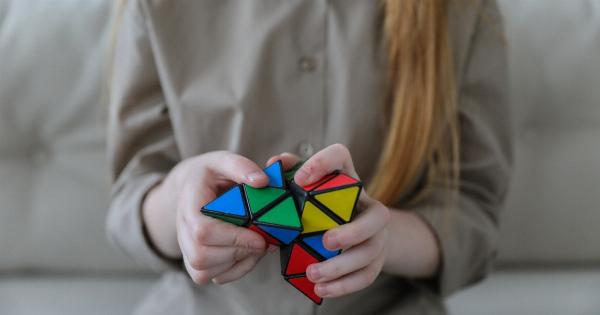If you are an avid gamer, you might have heard of the classic puzzle game called Tetris. It’s a game that has been around for decades and has captured the hearts of millions of players worldwide.
But did you know that playing Tetris can also strengthen your eye muscles? Yes, you heard it right! In this article, we will explore how playing Tetris can have a positive impact on your eye health and improve your overall visual perception.
What is Tetris?
For those who are unfamiliar with Tetris, let’s start with a brief introduction. Tetris is a tile-matching puzzle game originally designed and programmed by Russian game designer Alexey Pajitnov in 1984.
The game involves manipulating different-shaped blocks, known as Tetriminos, as they fall down the screen. The objective is to create a horizontal line of ten blocks without any gaps. Once a line is completed, it disappears, and the player earns points. The game continues until the blocks reach the top of the playing field.
The visual demands of Tetris
Tetris may seem like a simple game, but it actually requires a high level of visual skills and cognitive processing.
As the blocks fall, players need to quickly analyze the shape and orientation of each piece, make fast decisions, and accurately place them to create complete lines. This process involves hand-eye coordination, visual tracking, spatial awareness, and pattern recognition.
Eye movements in Tetris
When playing Tetris, your eyes constantly move and track the falling Tetriminos. This dynamic visual activity strengthens the eye muscles responsible for quick and accurate eye movements. The most common eye movements involved in playing Tetris are:.
1. Saccades:
Saccades are rapid eye movements that shift the gaze from one location to another. In Tetris, you need to scan the playing field to identify the best location for each Tetrimino and move your gaze accordingly.
2. Pursuits:
Pursuit eye movements involve smoothly tracking a moving object. In Tetris, you need to track and follow the falling Tetriminos with your eyes as they descend towards the bottom of the screen.
3. Fixations:
Fixations refer to the brief pauses in eye movements when your gaze becomes stationary.
In Tetris, fixations occur when you determine the optimal position for each Tetrimino and temporarily focus your attention on that spot before moving onto the next piece.
Eye-hand coordination in Tetris
In addition to eye movements, Tetris also requires excellent eye-hand coordination. To successfully place each Tetrimino in the desired location, your eyes need to accurately guide your hand movements.
This constant interplay between visual input and manual control strengthens the connection between your eyes and hands, improving overall coordination.
Tetris and spatial awareness
Another crucial visual skill involved in playing Tetris is spatial awareness. You need to understand where each Tetrimino will fit best and mentally manipulate them to visualize potential placements.
This process enhances your ability to mentally rotate objects, make accurate judgments about spatial relationships, and improve your overall spatial awareness.
The impact on visual perception
Regularly playing Tetris can have a significant impact on your visual perception. Research has shown that individuals who play Tetris for extended periods develop an enhanced ability to process visual information.
This improvement is not limited to the game itself but carries over to other visual tasks, such as reading, driving, and playing other video games.
Tetris for lazy eye (amblyopia)
Amblyopia, commonly known as lazy eye, is a vision disorder that affects the development of visual acuity in one or both eyes.
One common treatment for amblyopia involves patching the stronger eye to force the weaker eye to work harder and improve its vision. However, recent studies have suggested that playing Tetris can be a more enjoyable and effective alternative to traditional patching therapy.
The constant visual stimulation and eye movements required in Tetris can help strengthen the weaker eye and improve visual acuity.
Tetris and cognitive benefits
While the focus of this article has been on the visual benefits of playing Tetris, it is worth mentioning that this popular game also offers cognitive benefits.
Research has shown that playing Tetris can improve cognitive functions such as critical thinking, problem-solving, and mental flexibility. The game challenges your brain to quickly analyze and respond to constantly changing stimuli, thus enhancing your cognitive abilities.
Tetris for all ages
The great thing about Tetris is that it can be enjoyed by people of all ages. Whether you are a child or an adult, the game can provide you with both entertainment and valuable eye exercise.
Moreover, Tetris is easily accessible on various platforms, from handheld devices to gaming consoles and computers, making it a convenient option for anyone looking to strengthen their eye muscles.
Conclusion
Playing Tetris is not only a fun way to pass the time but also an activity that can have significant benefits for your eye health and visual perception.
The game’s visual demands, including eye movements, eye-hand coordination, and spatial awareness, contribute to strengthening eye muscles, improving hand-eye coordination, and enhancing overall visual processing. Whether you are looking to give your eyes a workout or simply enjoy a classic game, Tetris is a fantastic choice that offers both entertainment and visual benefits.





























